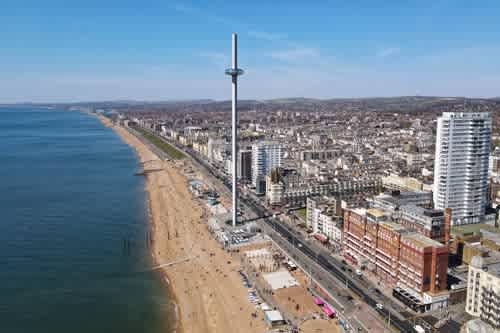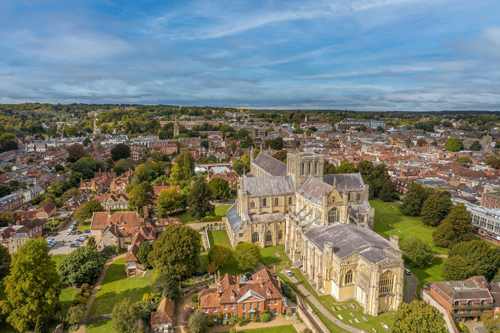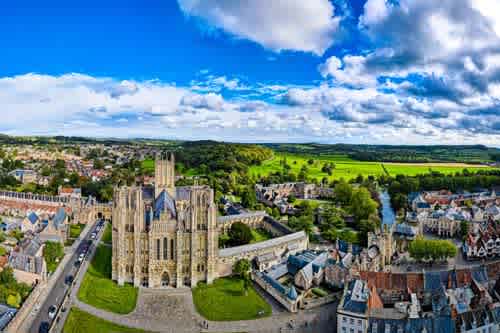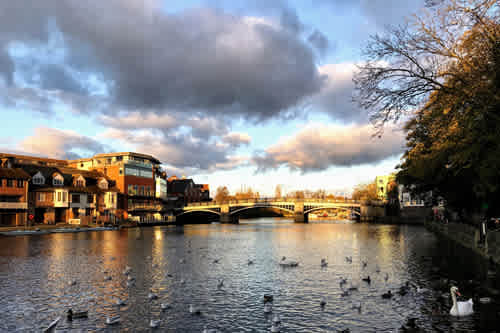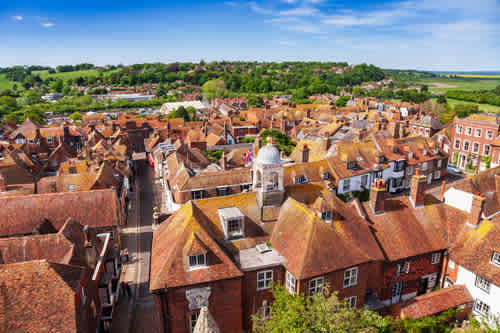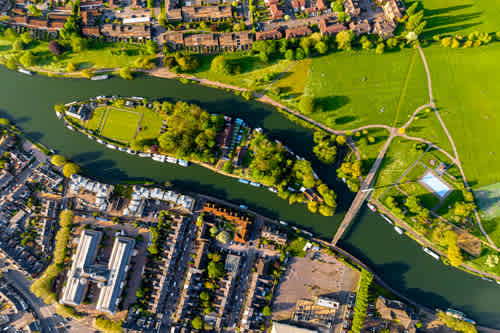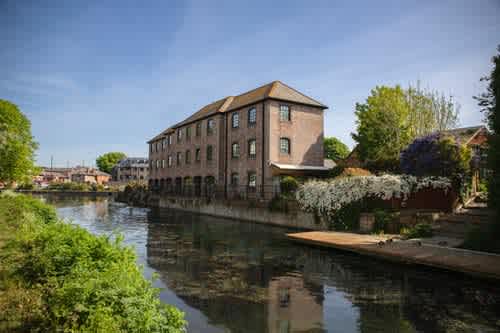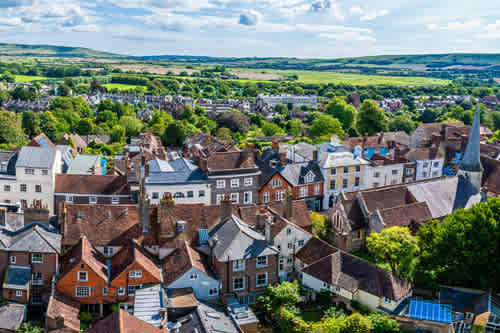About South East England
For the tourist, South East England offers so many points of interest that one can spend a few weeks and still not see it all.
The South East region of England, which borders with London to the North, runs long the English Channel shores, south to the port cities of Portsmouth and Southampton and is the largest and most populous region in England. Basically, it borders the regions of the East of England, East Midlands, Greater London, South West England and West Midlands.
Many of the attractions and sites can be part of day-trips from London. As well, there are many roads whereby you can drive through the area and visit small villages and small market towns and you will be welcomed with traditional hospitality.
We share with you some of the highlights that are exciting and stimulating from all aspects: history, nature and culture - sites not to be missed.
Winchester, which was established as the first capital city in 871 by King Alfred, is home to The Winchester Cathedral (The Cathedral Church of the Holy Trinity) and is one of the biggest (Gothic) cathedrals in Northern EuropeThe building started in 1079 and eventually was finished in 1532. This medieval Cathedral houses the 17th-century Morley Library. An exhibition “Kings and Scribes” has some of the Cathedral’s greatest treasures including all four volumes of the Winchester Bible, known to be the finest and largest of 12th century English Bibles.
Whilst in Winchester do visit the Great Hall, one of the best medieval aisled halls of the 13th Century which purports to have King Arthur’s round table. If you are a literature buff then you might want to see where Jane Austen was buried in the Cathedral (FYI, she was born in Steventon, lived and wrote in the town Chawton and was brought to Winchester for burial).
Secret: Winchester, which is a small market town, has an 18th century restored and working mill dating back to the Saxon times and as you wander and meander around the town you will notice many hints to the fact that that this indeed was once a capital city. The town is located on the Itchen River and you can have your “Kodak Moment” from the small, quaint bridge that spans the river.
Portsmouth is a port city and naval base where you’ll find the National Museum of the Royal Navy on the historic dockyard and several historic ships such as Admiral Nelson’s HMS Victory ship as well as parts of Henry VII’s Mary Rose.
No holiday is complete without taking time out to vacation along the coast and enjoy the beaches and stroll along the piers and have some exciting fun at the facilities at the piers. In Brighton, The Palace Pier which opened in 1899 and has been rebuilt, modernized and is now a popular place to visit – with millions of people visiting throughout the year, a wonderful place to wander around and enjoy the views as well as raise the levels of energy at the fairgrounds, arcades, rides and bars and restaurants. It is no wonder that a moniker for Brighton is 'London by the Sea'.
Worthing is situated in West Sussex and the Worthing Pier is a pleasure pier, a very popular destination. What is so amazing is that Worthing has had civilization for over 6000 years and has the greatest concentration of stone age flint from 300 BC, the Iron Age. Cissbury Ring is just north of Worthing and is a biological site designated a “Scheduled monument for its Neolithic flint mine and Iron Age hillfort”.
Note: 1. A scheduled monument is a nationally “protected from changes” archaeological site or historic building – of which there are about 20,000 in England).
2. Buildings are listed as Grade I or Grade II… if the building is listed as Grade I then you can be assured that it is unique and of significant architectural or historical importance and therefore changes cannot be made without approval from the appropriate authorities.
3. An Area of Outstanding Natural Beauty, of which there are 34, is a specific countryside protected for conservation because of its special or unique landscape and of national importance.
Oxford is a small city with a big University, including Grade 1 listed buildings such as the Bodleian Library, Radcliffe Camera and Sheldonian Theatre, the Ashmolean Museum which is the University of Oxford's museum of art and archaeology, the Museum of Natural History, the Pitt Rivers Museum and the Museum of the History of Science. As well, on the “fun side” you can explore the university buildings where Harry Potter films were used and you can be part of the magical world of Muggles and Wizards and follow in the footsteps of Ton and Hermione and Harry. Or walk through the historic University City of Oxford and discover what it is about this site that inspired writers such as Lewis Carroll and Tolkien and of course C.S. Lewis. Yet the best is yet to come! The “piece de resistance”, if you are feeling reckless and brave, you can be spooked and check out the ghosts that wander the corridors of the University.
As a coastal town in the county of Kent, Dover is a major port for ferries to Calais, in France. The medieval castle and the underground Secret Wartime Tunnels are waiting for you to come and explore them. Winston Churchill had ordered for another set of tunnels to be built, but it was not used and the Fan Bay Deep Shelter, as it was called, was abandoned and fell into disrepair. It was reconstructed and then reopened to the public a few years ago. Needless to say, you cannot leave Dover without hiking the symbolic White Cliffs of Dover and stopping to catch the “Kodak Moment” - the fascinating view from the cliffs where you can see all the way to the French Coast.
Canterbury, a cathedral city in southeast England, was a pilgrimage site in the Middle Ages. Ancient walls, originally built by the Romans, encircle its medieval center with cobbled streets and timber-framed houses. Canterbury Cathedral, founded in 597 A.D., is the headquarters of the Church of England and Anglican Communion, with its Gothic and Romanesque stone carvings and stained-glass windows it is second to none. It is also one of the homes to the Archbishop of Canterbury.
West of London, the town of Windsor sits on the Thames River. The Windsor Castle, which was built by William the Conqueror in the 11th century as the official residence of the British Royal family, is “its crown jewel”. It is known to be not only the biggest but also the oldest inhabited castle in the entire world. If you are there on Tuesdays, Thursdays or Saturday don’t miss the ceremony of the Changing the Guard within the castle's walls. Should you be travelling with children, then visit Legoland Windsor Resort, an exciting and fun “must do” and it is open year-round.
The South East area has the most famous castles in England like the Royal Windsor Castle in Windsor, Ashdown House in Newbury, Great Fosters in Egham, Bodiam in Robertsbridge, Dover Castle in Dover, Hever Castle & Gardens and many more which are suitable for a day trip.
Nature lovers will appreciate The Cotswolds, close to London and well-known for its typical English landscapes, the rolling hills which stretch from the Thames and the many small towns and villages built throughout the area from sandy yellow Cotswold stone.
Cirencester, on the River Churn which is a tributary of the Thames River, is the one of the larger market towns in the Cotswold district. It is designated as an Area of Outstanding Natural Beauty.
This is not the England of ancient times. In Medieval times, South East England included most of the ancient kingdoms of Wessex, Kent and Mercia. The most important city was Winchester, the ancient capital of the kingdom of Wessex and home of Anglo-Saxon King, Alfred the Great (849 –899) who fought the Vikings, the invaders to England. This region also saw the conquest and unification of England under William the Conqueror, Duke of Normandy, after his victory in the Battle of Hastings in 1066.
Thus, when touring through this wonderful area you will gain an understanding of the past while enjoying the present.














